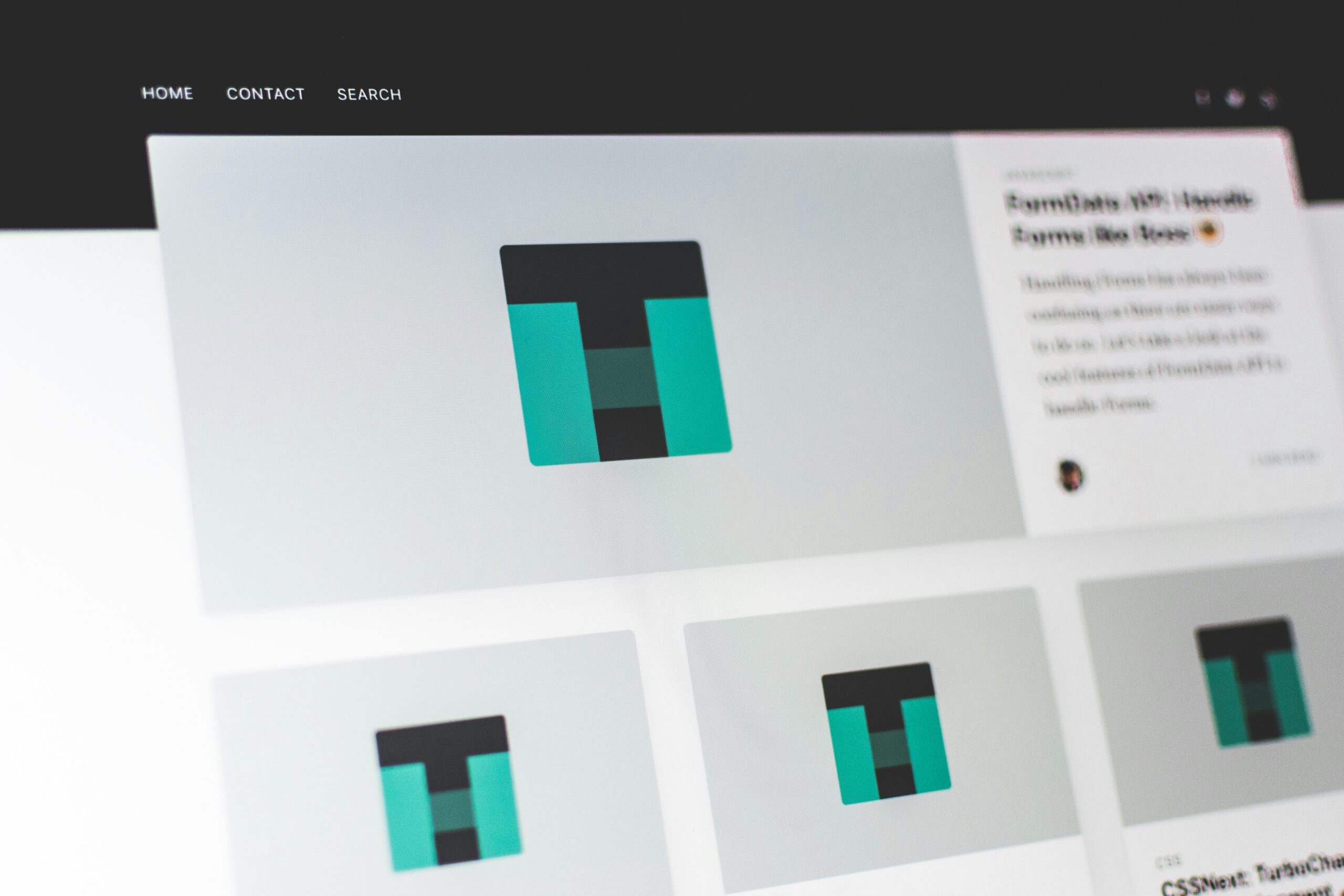Custom web development offers bespoke, unique solutions that drive brand visibility and personalized user experiences, while pre-made templates promise quick, budget-friendly results. In this article, we compare these approaches across quality, performance, scalability, cost, and user experience. Learn why custom development is more effective than pre-built templates in meeting unique business needs.
Key Takeaways
- Custom websites offer full control over design, functionality, and branding.
- Templates are faster to launch and budget-friendly for simpler needs.
- Custom development supports better performance and user experience.
- Scalability is easier with a custom-built digital foundation.
- Long-term value often outweighs the upfront investment in custom sites.
Custom Web Development – A Tailored, Unique Solution

Custom web development allows businesses to build a website entirely around their goals, branding, and customer experience. It offers complete design control, making it easier to incorporate unique layouts, user flows, and visuals that reflect brand identity. Developers can prioritize SEO structure, responsive design, and clean navigation from the beginning. This flexibility ensures a smoother integration with digital marketing strategies. Unlike generic templates, every element is intentional and adaptable. As a result, the final site feels polished, modern, and tailored to the business.
Aligning Design with Brand Identity
Tailored web development empowers businesses to translate their brand vision directly into design. Every element, from layout to navigation, can reflect a company’s tone, values, and audience preferences. Unlike templates, which follow pre-set aesthetics, custom designs offer creative freedom to stand out in competitive markets and maintain visual consistency across platforms. This alignment strengthens credibility and recognition, especially when visuals and interactions echo a brand’s personality.
Supporting Advanced Functionality and Integration
Custom websites allow seamless integration of specialized tools, databases, or marketing platforms tailored to business operations. Developers can build features from the ground up—whether it’s a product configurator, custom CRM connection, or advanced analytics dashboard. This level of integration not only improves internal efficiency but also offers a frictionless user experience, which pre-built templates often cannot accommodate without third-party plugins.
Enhanced Usability Through Targeted Testing
Custom development enables user experience (UX) testing throughout the design process. Developers can iterate based on real user feedback, ensuring smooth navigation, logical layout flow, and high accessibility. This focus on usability means the final product isn’t just attractive—it performs well for real users on various devices. In contrast, templates typically skip this layer of refinement, relying on generic layout assumptions.
Pre-Built Templates – Quick and Budget-Friendly Options

Pre-made templates are ideal for quick launches, especially for businesses working with limited budgets or timelines. They offer ready-to-use layouts and features that simplify the web design process. Most templates come with user-friendly editors that allow basic customizations without coding. While easy to use, they often lack originality and design flexibility. Templates also tend to follow common design patterns used across many sites. This makes them less ideal for long-term branding or complex growth. They’re best for temporary needs or simpler web projects.
Speeding Up Deployment for Fast Launches
Pre-built templates are ideal for businesses needing a swift online presence. With plug-and-play features, pre-set page layouts, and minimal coding requirements, websites can be live within days. This speed benefits startups or seasonal campaigns where time-to-market is a top priority. The ability to launch quickly provides visibility and helps businesses begin marketing without delay.
Lowering Initial Investment Costs
Templates significantly reduce development costs by eliminating the need for custom coding. Most include built-in styling, pre-configured widgets, and content blocks, minimizing the demand for developer hours. For businesses working with limited funds, this cost advantage allows them to allocate more of their budget toward advertising or content creation while still maintaining a functional site.
Ease of Use for Non-Developers
One of the biggest advantages of template-based websites is user-friendliness. Many come with drag-and-drop builders that empower non-technical users to update content, swap images, or add pages. This simplicity ensures ongoing management is not dependent on a developer, which can be a game-changer for small teams or solopreneurs managing their digital presence.
Quality and Uniqueness – Custom Solutions vs. Templates

A custom website offers unmatched design quality because every detail—from structure to visuals—is built with purpose. This helps businesses stand out with a more branded, professional presence. Custom builds allow teams to develop intuitive layouts that match user expectations and business goals. In contrast, templates follow fixed formats, which may limit creativity. While they can look clean, they often resemble other websites using the same theme. Businesses seeking long-term brand recognition benefit more from a custom-first approach. The difference in design impact is immediately noticeable.
Creating a Distinctive Online Presence
Custom web development ensures that no two sites look the same. With the freedom to build around a unique vision, businesses can incorporate creative storytelling, interactive visuals, and personalized messaging into their digital platform. This originality elevates a brand above the noise and resonates with visitors looking for authenticity.
Maintaining Consistency Across Touchpoints
Custom sites allow better control over how branding elements like color palettes, typography, and messaging are implemented. This consistency is vital in reinforcing brand identity across every digital interaction. Templates, while stylish, often limit design flexibility, making it harder to carry brand consistency across other marketing channels like email, ads, and landing pages.
Standing Out in Competitive Industries
Industries like fashion, real estate, or tech demand strong differentiation to attract and retain users. A customized website acts as a visual and functional showcase that reflects innovation and professionalism. Pre-built templates may struggle to meet niche design or functionality needs, potentially making businesses appear indistinct or outdated in highly competitive fields.
Performance Factors – Custom Optimization vs. Template Constraints

Performance is a key area where custom development often outshines templates. Developers can streamline every part of the site, removing unnecessary features and focusing on speed and efficiency. This means faster load times, better responsiveness, and improved browsing across devices. Templates, on the other hand, may include extra code or unused tools that slow things down. They’re built to suit multiple industries, which often means bulkier features. Custom sites stay lean and focused, offering smoother functionality tailored to the business’s needs. This makes a real difference in user experience.
Optimizing Load Times for Better SEO
Custom websites can be built with lean, efficient code that minimizes load times—a critical factor in search engine rankings. Developers can eliminate unnecessary scripts, prioritize above-the-fold content, and compress assets to enhance performance. Templates, by contrast, often include extra features that bloat code and increase page load times, hurting both SEO and user retention.
Reducing Plugin Dependency
A custom-built site can consolidate features into the core codebase, reducing reliance on third-party plugins. This approach streamlines updates, improves security, and minimizes bugs caused by plugin conflicts. Templates often require numerous add-ons to achieve similar functionality, which can complicate maintenance and create long-term inefficiencies.
Improving Device-Specific Performance
With custom development, performance can be fine-tuned for different devices, ensuring a seamless experience whether a user is browsing on mobile, tablet, or desktop. This level of refinement helps avoid design breakage and improves accessibility. Templates may offer responsive design, but they don’t always adapt intelligently to varied user interactions or niche device resolutions.
Time and Budget Impact – Investment vs. Immediate Savings

Choosing between custom development and templates often comes down to short-term savings versus long-term value. Templates are quicker to launch and easier on the budget upfront, which makes them great for new businesses or limited-scope projects. But they may require costly redesigns later when needs evolve. Custom sites take more time and resources initially, but they’re built to last and adapt. Over time, they can reduce the need for frequent updates or patches. For businesses thinking ahead, the long-term payoff often justifies the investment.
Weighing Upfront Costs with Lifetime Value
A custom site may involve higher development costs, but it pays off through tailored efficiency, stronger branding, and reduced maintenance needs. Businesses investing in custom builds often find the total cost of ownership lower in the long run. By contrast, templates help stretch a tight budget upfront but may lead to limitations that require eventual redevelopment.
Managing Future Updates with Flexibility
Custom development offers control over future enhancements, allowing new features to be integrated cleanly into the existing framework. This flexibility supports scaling, security updates, and interface refreshes without major downtime. Templates may offer limited customization, and updates could risk breaking the layout or functionality, especially when plugins become outdated.
Balancing Speed with Strategic Planning
Templates are ideal for fast, short-term solutions but may not align with long-term business plans. Custom development, while slower to launch, involves careful planning around business goals, user journey, and conversion strategy. This strategic approach often results in a more cohesive and effective digital presence over time.
User Experience Across Platforms – Design Flexibility vs. Ready-Made Design

A custom website is built with the user journey in mind from the very beginning. Designers can shape every element—from navigation to mobile responsiveness—to fit audience behavior. This results in smoother browsing, faster clicks, and more meaningful interactions. Templates, while responsive by default, often rely on one-size-fits-all layouts. That means less room for adjusting flows based on actual user feedback. When the goal is to keep users engaged across all devices, a custom design offers better control and a more tailored experience overall.
Creating Seamless Multi-Device Interactions
Custom sites are engineered to adapt fluidly across screen sizes and platforms, from smartphones to desktops. This ensures every user gets a smooth experience with no design glitches or performance lags. Templates offer basic responsiveness, but customization for emerging device trends or specific user behaviors is often limited.
Improving Accessibility and Navigation
Tailored development allows designers to focus on inclusive user experiences. Custom websites can meet accessibility standards by optimizing for screen readers, keyboard navigation, and visual clarity. This not only benefits users with disabilities but also enhances usability for everyone. Templates might overlook these features or require external add-ons to comply.
Personalizing User Journey Flows
With custom design, user paths can be mapped and refined to align with how specific audiences engage with content. Strategic layout planning, CTAs, and content blocks guide users intuitively toward desired actions. This personalized flow boosts engagement and conversions. Templates, with rigid layouts, often lack the ability to fully tailor the experience from start to finish.
Conclusion
Deciding between custom website development and pre-built templates requires a close look at your business’s needs, goals, and future growth. Templates offer a quick and cost-effective solution, especially for businesses looking to launch fast with limited resources. They’re easy to use and provide the essentials, but can quickly become limiting as your brand grows.
On the other hand, custom development creates a strong digital foundation tailored to your vision, offering greater flexibility, design control, and scalability. It supports a better user experience, stronger branding, and smoother integration with marketing efforts. While it requires more upfront investment, the long-term benefits often outweigh the initial costs. A custom website is ideal for businesses ready to invest in a powerful and personalized online presence. Choosing the right approach depends on where you are—and where you want to go.
